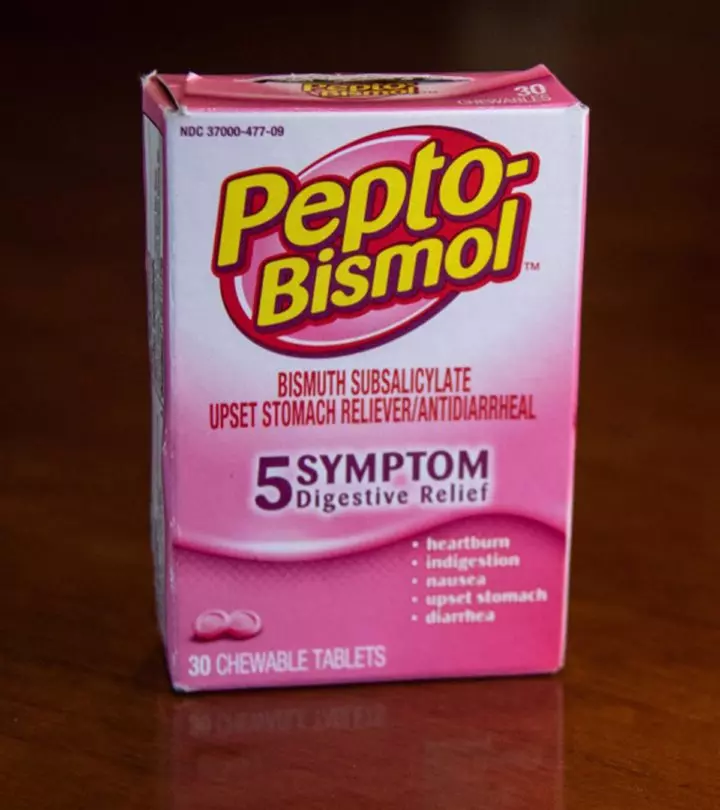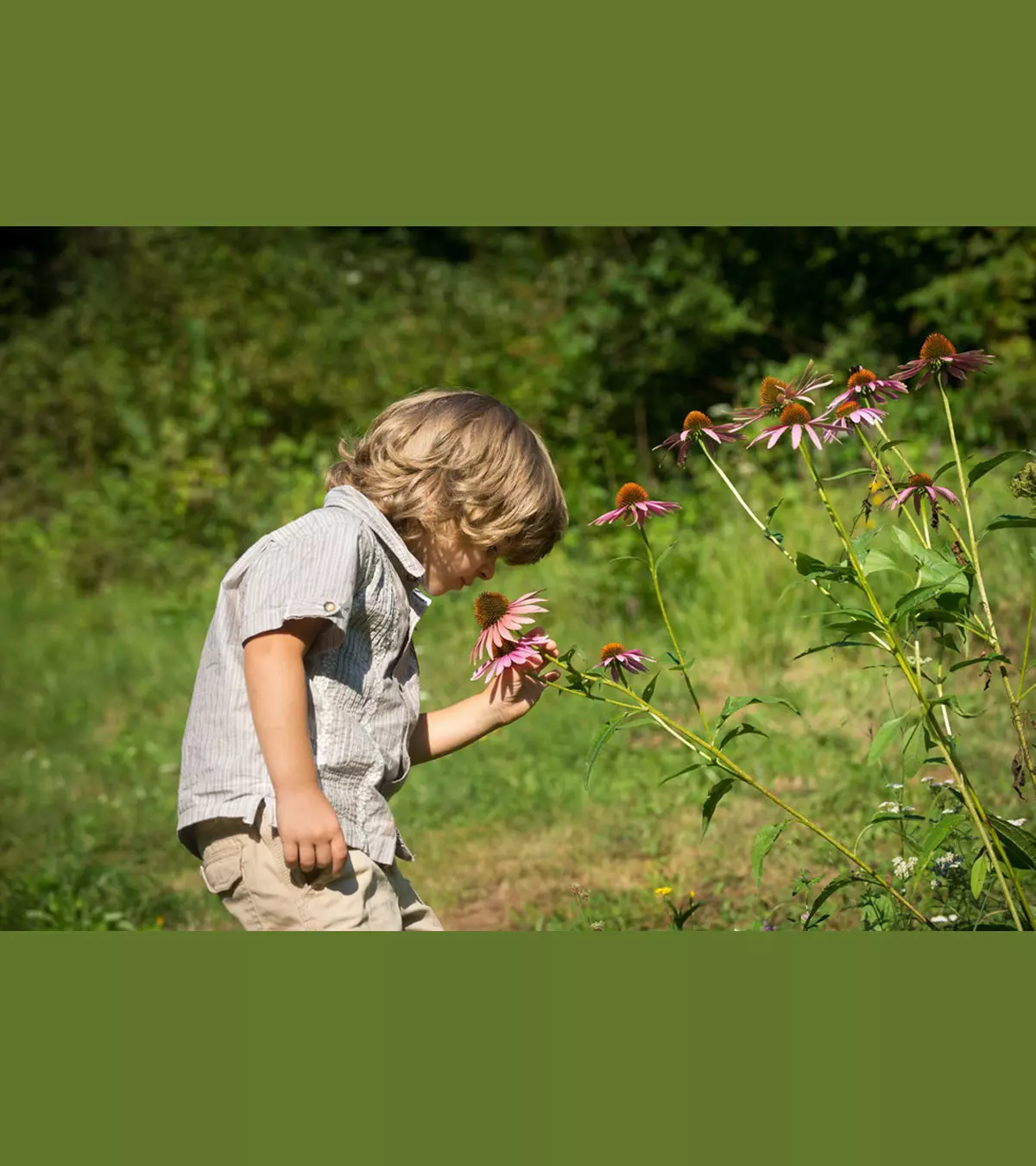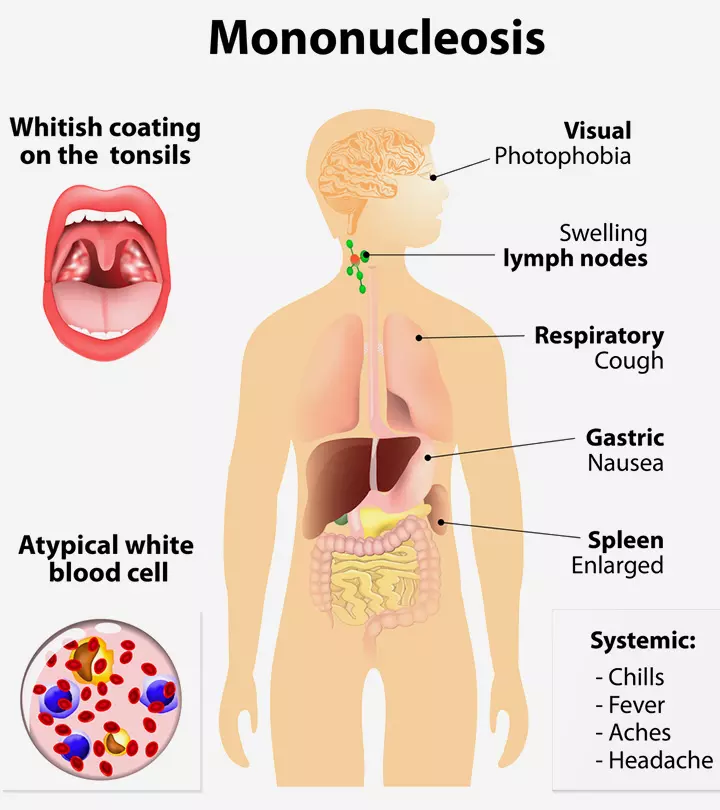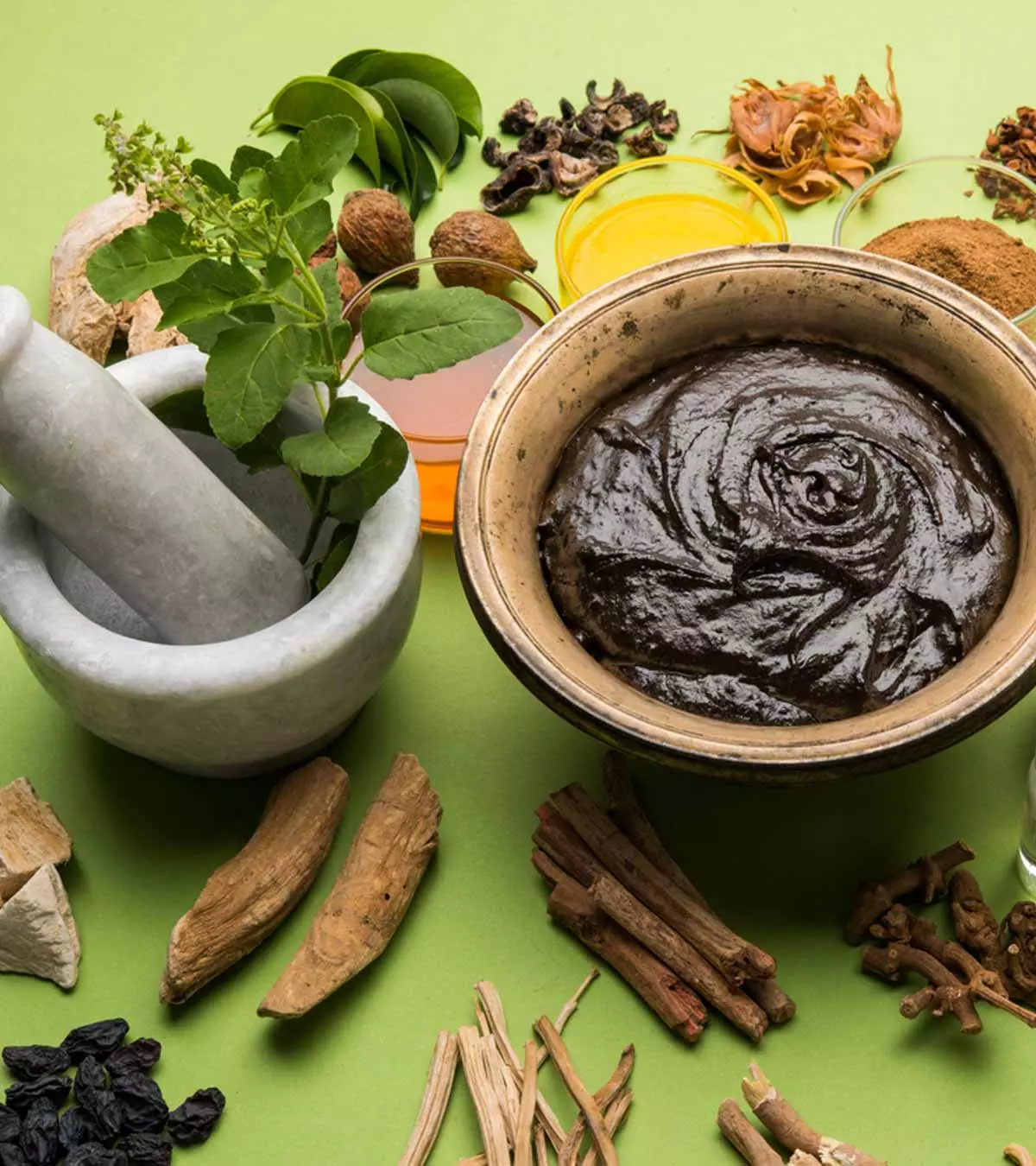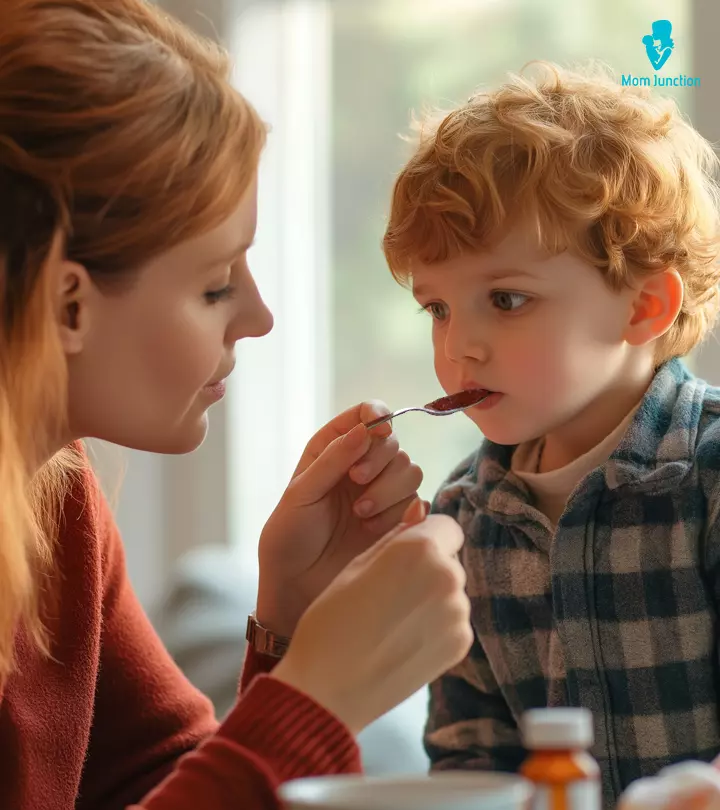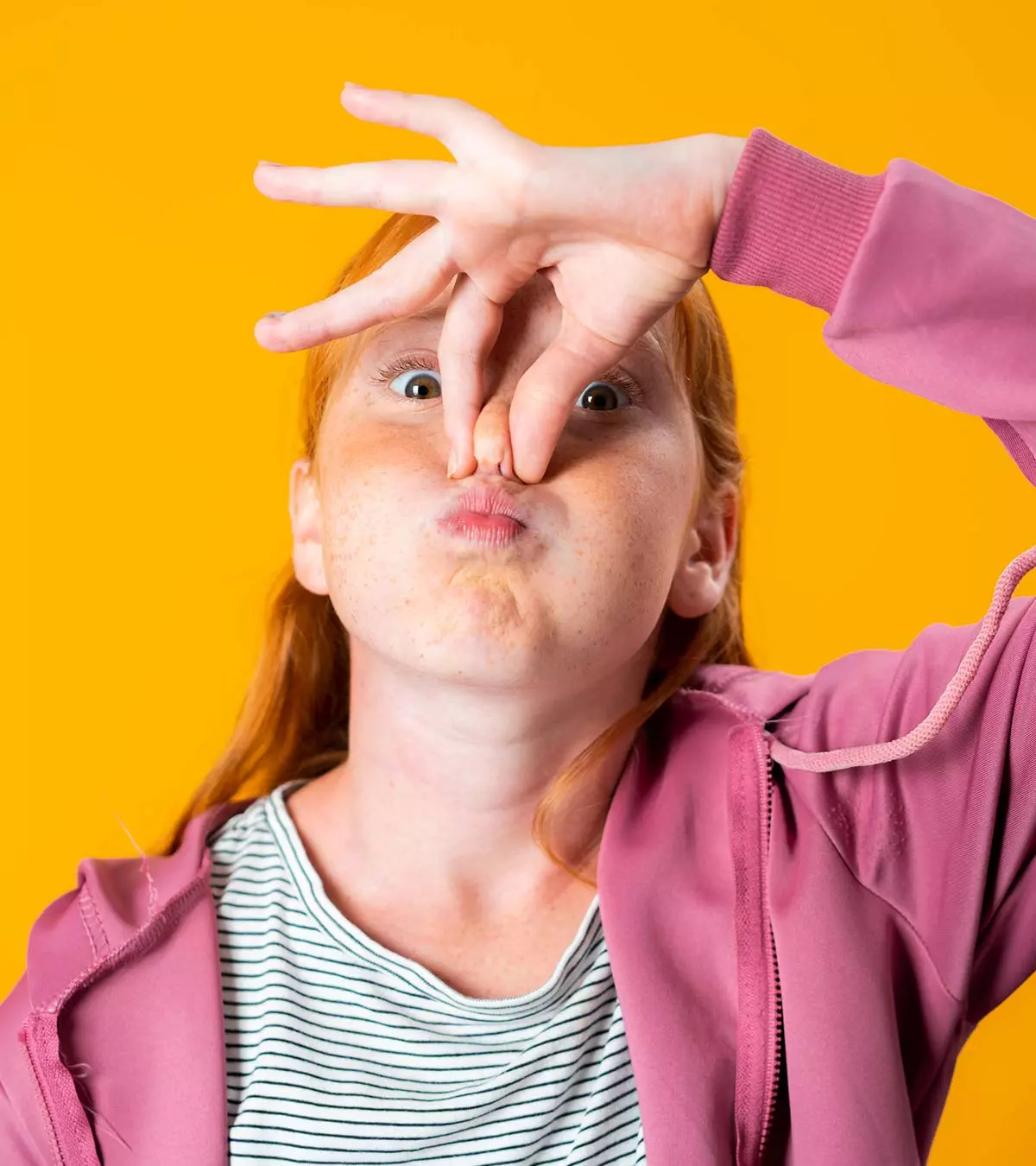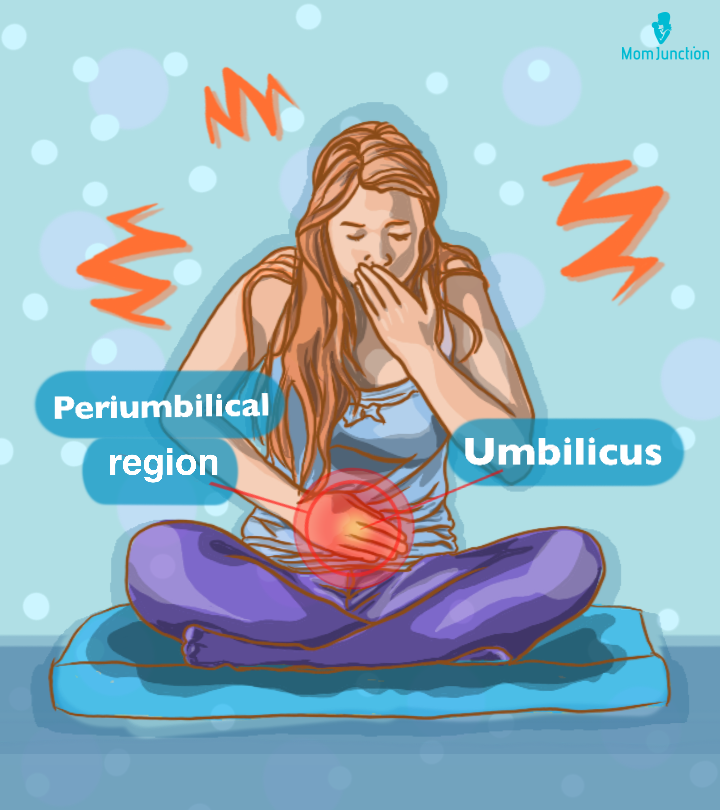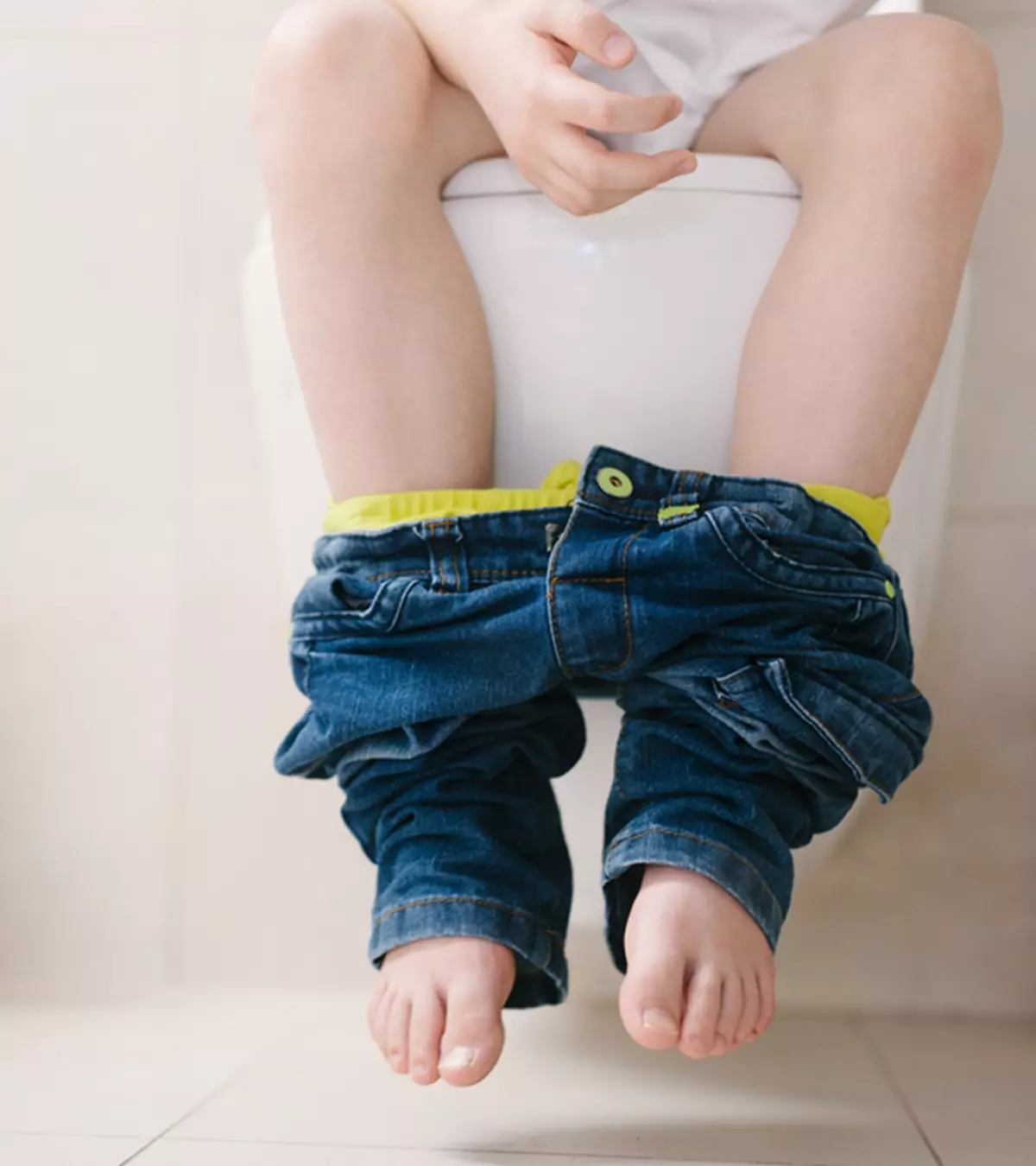
Image: Shutterstock
Hemorrhoids, often called piles, are swollen veins in the anus and lower rectum resembling varicose veins. Hemorrhoids in children can occur at any age, though it is less prevalent in children than in adults.

In the pediatric population, constipation is among the most common causes of hemorrhoids, which are not life-threatening but can be extremely painful and bothersome.
Read this post to know about the different causes, symptoms, and complications of hemorrhoids and how they can be treated and prevented in children.
Key Pointers
- Hemorrhoids may occur due to constipation, a low-fiber diet, or sitting on the toilet for a long time.
- Children may have symptoms, such as painless bleeding while passing stool, itching in the anal area, or rectal pain.
- The condition may be prevented by a high-fiber diet, adequate hydration, and exercise.
- Mild cases of hemorrhoids in children can be treated at home using sitz baths, oral pain relievers, topical creams, etc. For severe cases, consult a healthcare professional.
Types Of Hemorrhoids
Hemorrhoids can be of the following types (1).
- Internal hemorrhoids occur when the veins inside the anal canal are swollen
- External hemorrhoids occur when the veins near the anus are swollen
It is possible to have both types of hemorrhoids simultaneously, and the symptoms and treatment options may vary depending on the type.
Causes Of Hemorrhoids
Increased pressure in the rectal and pelvic area can cause swelling and stretching of the veins, leading to hemorrhoids. The following situations may increase the risk of hemorrhoids in children (2).
- Straining during defecation due to constipation, diarrhea, or other digestive problems
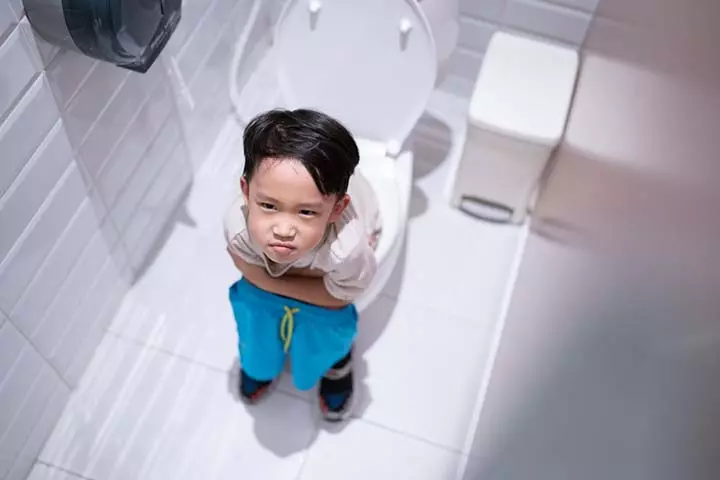
- Chronic liver failure
- Sitting on hard surfaces, such as on wooden stools, for a long time
- Sitting on the toilet for a long time
- Low-fiber diet
- Obesity
- Children who practice weight lifting may have a higher risk of developing hemorrhoids
Straining due to constipation or diarrhea can be a common cause of hemorrhoids in many children
. You may seek medical care for persistent bowel movement issues in your child.
Signs And Symptoms Of Hemorrhoids
Common signs and symptoms of external and internal hemorrhoids could include the following (3).
- Painless discharge of blood in the child’s stool (in cases of uncomplicated hemorrhoids). Bright red streaks of blood on toilet paper or in the toilet bowl after a bowel movement may indicate bleeding.
- Persistent itching and irritation in the anal area.
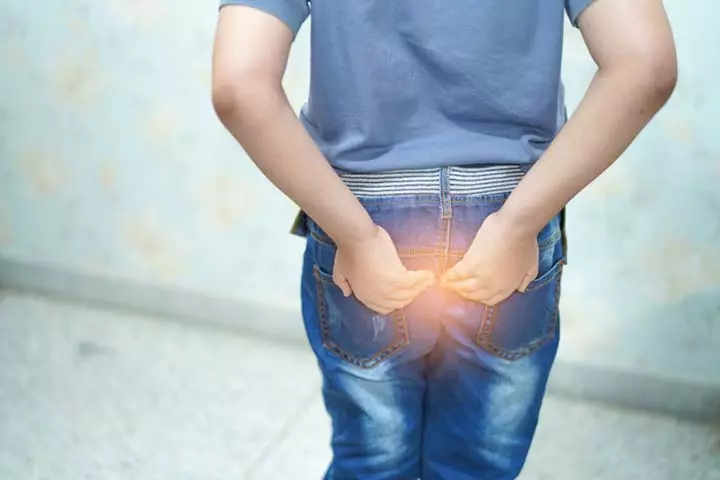
- Rectal or anal pain. Children may complain that it is painful to clean after a bowel movement.
- Mucus and stool on toilet paper without bowel movement may indicate bulging internal hemorrhoids.
- Hard, painful lumps and clots under the skin can be seen in external hemorrhoids.
Internal hemorrhoids can be small and located in the wall of the anal canal. Sometimes, large internal veins can sag and bulge out (prolapse) of the anus. This may cause continuous pain in the anal area since the anal muscle may squeeze the vein. The child may complain of increased pain if there is the cessation of blood supply to hemorrhoids.
A study determined the prevalence and severity of hemorrhoidal symptoms associated with different grades of internal hemorrhoids. Internal hemorrhoids are classified based on the norms defined by Goligher and are ranked from grade I to IV depending on their appearance and degree of prolapse. As the graph below depicts, the frequency of pain, bleeding, swelling, and itching increased with the severity of the disease.

Occurrence of hemorrhoidal symptoms according to hemorrhoid grades
Source: Hemorrhoidal disease and chronic venous insufficiency: Concomitance or coincidence; results of the CHORUS study (Chronic venous and HemORrhoidal diseases evalUation and Scientific research); Journal of Gastroenterology and HepatologyComplications Of Hemorrhoids
Complications are rare in children. However, the following complications may arise if the hemorrhoids are left untreated for a long time (4).
- Anemia may occur due to blood loss.
- A thrombosed hemorrhoid is when a blood clot is formed in it. Although it is not a life-threatening condition, this can be extremely painful and require intervention.
- Strangulated hemorrhoid is when the blood supply to the internal hemorrhoid is cut off, causing extreme pain.
Prevention Of Hemorrhoids
The following ways may help to prevent or reduce the symptoms of hemorrhoids in children (4).
- Fiber-rich foods for kids may help soften the stool and reduce straining during defecation. Vegetables, fruits, and whole grains are good sources of fiber.
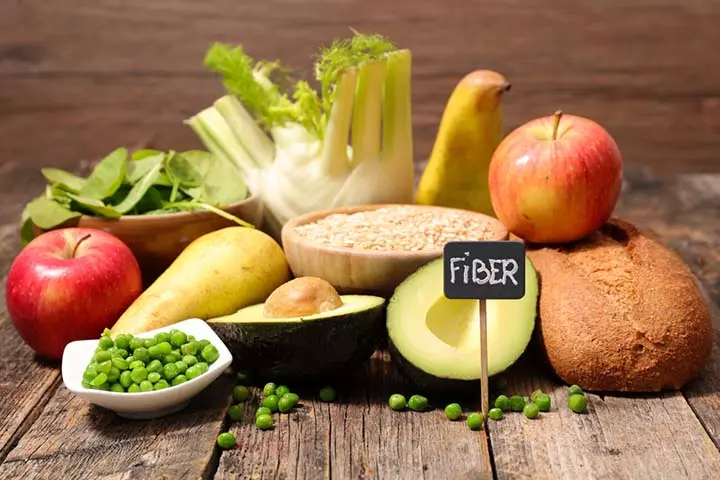
- Adequate hydration to prevent hardening of the stool. You may ensure that the child is drinking enough water with a high-fiber diet. If not, it may worsen constipation.
- Exercise may help to ease constipation. This can also be beneficial for obese children.
- Avoid sitting on the toilet for a longer duration since this may increase pressure on anal veins.
- Do not sit on hard surfaces for a long time.
- Ask your child to defecate when they feel an urge. Stool may harden if the bowel movement is delayed.
- Tell your child not to strain and hold breath to empty the bowel.
 Point to consider
Point to considerDiagnosis Of Hemorrhoids

Health history and physical examination may help to diagnose hemorrhoids in children. Usually, the physical examination is enough for the diagnosis, and further tests may not be ordered. Some children with internal hemorrhoids may require proctoscopy or anoscopy to visualize the rectum.
If the initial examination is not precise, doctors may order sigmoidoscopy or colonoscopy to look for other causes of rectal bleeding. All these diagnostic procedures use a flexible tube with a camera and light to visualize the lumen of the bowels.
How To Help Children With Hemorrhoids At Home?
Children with mild cases may receive homecare directions from the pediatrician. The following home treatments are often recommended for non-complicated cases (5).
- High-fiber diet and adequate hydration
- Use sitz bath or soak the anal area in warm water for 10 to 15 minutes two or three times daily
- Take oral pain relievers recommended by the pediatrician
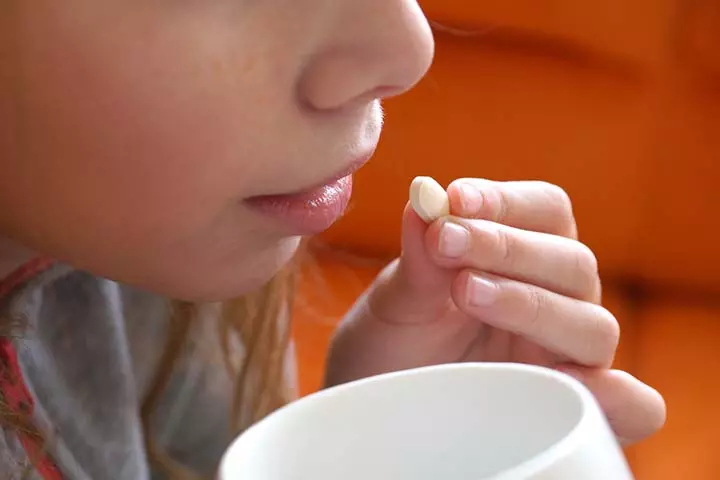
- Use topical hemorrhoid creams and ointments recommended by the pediatrician
- Use pads with numbing agents and suppositories with hydrocortisone after consulting the pediatrician
- Over-the-counter stool softeners may help to relieve constipation
 Quick fact
Quick factHemorrhoid symptoms usually improve within a week with home care. However, consult your child’s doctor before trying any home remedies, as they may not be suitable for all children. Also, schedule a pediatric visit if your child experiences severe pain, bleeding, or other symptoms that cause persistent discomfort.
Treatment For Hemorrhoids
Minimally invasive procedures are often done to manage persistently painful and bleeding hemorrhoids (5).
- Rubber band ligation: This involves putting tiny rubber bands at the base of internal hemorrhoids to stop the blood supply. Most hemorrhoids may fall off within a week after this procedure. Although rarely severe, banding may cause bleeding and other complications in some children after two to four days.
- Coagulation techniques: This method uses heat from infrared, bipolar, or laser sources to control internal bleeding hemorrhoids. This may help stop the bleeding from small hemorrhoids and often causes discomfort and side effects in some children.
- Sclerotherapy: This is done by injecting chemical solutions into the hemorrhoid tissue leading to inflammation and shrinkage. Although it may cause less pain and discomfort, effectiveness is less than rubber band ligation procedures.
- External hemorrhoid thrombectomy: This is a surgical procedure to remove the thrombosed (blood clot) external hemorrhoid under local anesthesia to relieve pain. It is most effective to do this procedure within 72 hours of clot formation.
Children with larger and complicated hemorrhoids with unsuccessful minimally invasive procedures may require surgical procedures (5).
- Hemorrhoidectomy: This is the surgical removal of hemorrhoids. Recurrent and severe cases are treated with this procedure.
- Stapled hemorrhoidopexy: This is also called hemorrhoid stapling, and it is a procedure to block the blood supply to the internal hemorrhoids.
These procedures may cause bleeding and urinary tract infections in some children. However, life-threatening complications, such as sepsis (blood infection), are rare due to advancements in surgery.
Frequently Asked Questions
1. Will hemorrhoids go away on their own?
Piles often self-resolve in a few hours. However, they may recur in some cases (6). You may contact your healthcare professional if you notice recurrent hemorrhoids in your child for early treatment.
2. When should you see a doctor for hemorrhoids?
You should see a doctor if you notice rectal bleeding, lingering pain, change in stool color, or an anal lump growth. Even if you experience fever or there is a puss, you should visit a medical professional (7).
3. Can a 12-year-old get piles?
Piles are not common in children and may occur in 12-year-olds (8). If you notice any symptoms of piles in your child, you should have them examined by a healthcare professional.
4. Can baby wipes cause hemorrhoids?
No, baby wipes do not cause hemorrhoids. Instead, they are considered a convenient option for cleaning the anus and rectal area, especially for individuals with hemorrhoids. It is because they are softer and gentler on the skin than toilet paper and can help soothe inflamed tissues, which can help reduce itching (11).
Hemorrhoids in children mostly occur in those who experience regular constipation. It may also be found in children with obesity, chronic liver failure, and digestive problems. You may notice painless bleeding while passing stool, itching in the rectal area, or rectal pain in children with hemorrhoids. Seek a doctor’s advice to help them recover faster and avoid complications. Your doctor may suggest minimal invasive or surgical procedures. Mild cases in children can be treated at home with the help of a high-fiber diet, sitz bath, and prescribed oral medication.
Infographic: More About Surgical Treatments For Hemorrhoids In Children
Hemorrhoids are rarely severe in a child, requiring surgical intervention. However, when they become enlarged and painful, a doctor may suggest a surgical approach to treat them. In such cases, knowing the criteria and possible adverse effects of surgical procedures, as discussed in this infographic, is essential before considering one for your child.
Some thing wrong with infographic shortcode. please verify shortcode syntax
Illustration: Tips To Prevent Hemorrhoids In Kids Causes And Treatment

Image: Dall·E/MomJunction Design Team
References
1. Hemorrhoids; MedlinePlus; U.S. National Library of Medicine
2. Hemorrhoids; CS Mott Children’s Hospital
3. Hemorrhoids; Children’s Hospital of Orange County
4. Hemorrhoids; St. Clair Health
5. Hemorrhoids; The University of California, San Francisco; UCSF Health6. Piles (haemorrhoids); NHS
7. When to See a Doctor for Hemorrhoids; Houston Methodist
8. A case of haemorrhoids in a 12-year-old boy; ResearchGate
9. What are hemorrhoids?; Johns Hopkins Medicine
10. Hydrocortisone for piles and itchy bottom; NHS
11. Hemorrhoids; Penn Medicine
Community Experiences
Join the conversation and become a part of our nurturing community! Share your stories, experiences, and insights to connect with fellow parents.
Read full bio of Dr. Neema Shrestha
Read full bio of Dr Bisny T. Joseph
Read full bio of Dr. Ritika Shah
Read full bio of Vidya Tadapatri






